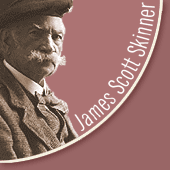




The Collection
Please select an image to view the full record details.
There are 900 records in the
collection.
1 > 2 > 3 > 4 > 5 > 6 > 7 > 8 > 9 > 10 | next 10 of 90 pages
| Image | Title | Item Description |
|---|---|---|
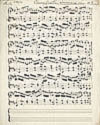 JSS0041 |
Cluny Castle Inverness-shire | Cluny Castle was the home of Macpherson of Cluny. Many thought that the composer, Alexander Troup (b. near Ballater, Aberdeenshire, 1835) was 'one of the greatest living authorities upon all things pertaining to Scotch music.' As a young man he led the psalmody at before Queen Victoria at Crathie Church,... |
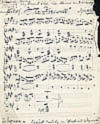 JSS0042 |
My Bonnet Blue lies stained and Bloody, or the Farewell | This is a larger version of JSS0039. The tempo has been changed from 'with intense and patriotic feeling' to 'slowly and unaffectedly'. The same message to the engraver has been included here, which shows that Skinner still intended this to be the final piece in the collection. It is called 'The Composer's... |
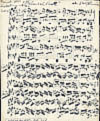 JSS0043 |
Balmoral Castle | Balmoral Castle, in Aberdeenshire, is the Royal Family's Scottish Highland retreat. Prince Albert had it built in 1855 for Queen Victoria on the grounds of the original castle (1546). Skinner describes the music as a 'March bright & teeming with life'. The first of two variations represents 'a rush of... |
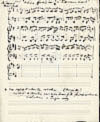 JSS0044 |
Where Gadie Runs or The Hessians March | 'O Gin I were whaur Gadie Rins' is a traditional North-east song. At the top left, 'The Gordons March Past' refers to the Gordon Highlanders regiment, raised in 1794. The alternative title, 'The Hessians' March', is for the music, thought to have been imported into Scotland by Scottish soldiers who had... |
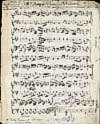 JSS0045 |
St Mungo's Welcome to Scott Skinner | The title of Skinner's "*St Mungo's Welcome to Scott Skinner" has been pasted over another title and inscription. Top left is 'May be played either pathetically or Heroically. the latter - '. At the right top is 'by J Sco_' (obscured by a glued fold of paper) 'at Keith, June 1889'. In the right margin... |
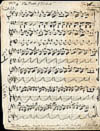 JSS0046 |
The Battle of Falkirk | Skinner's '*"The Battle of Falkirk"; is a 'Quick step', a type of 'couple dance' (for two people). There were two famous 'Battles of Falkirk'. The first, in 1298, between the English and the Scots, was led by 'The Scottish Patriot' William Wallace. In 1746 the Jacobites fought the English there, as they... |
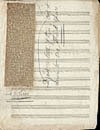 JSS0047 |
Newspaper clipping: SKetch of Pipe-Playing at Highland Gatherings | On the verso of 'St Mungo's Welcome to Scott Skinner' Skinner glued an undated newspaper clipping providing background to the 'Highland Gathering' at the 'Glasgow International Exhibition', in which he had participated. The article, a brief history of piping competitions, mentions Mendelssohn attending... |
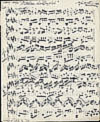 JSS0048 |
Madam de Lenglee | Madam Finart de Lenglée was the daughter of a French General, a recipient of the Legion d'Honneur. She assisted Skinner and his adopted daughter Jeannie Meldrum with his dancing classes during his wife Jean's long illness. The note at the bottom of the page, 'revised Feb: 14 '96', could suggest that... |
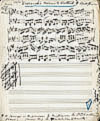 JSS0049 |
Carnegie's Welcome to Scotland | The title of the 'March Met[metronome marking] Tempo 112 & Breezy' is underlined with blue crayon, and signed 'J Scott Skinner'. at the right. He had planned a variation to be set simply with 'no Bass small notes', but later crossed out the instructions. Andrew Carnegie (1835-1919), steel magnate and... |
 JSS0050 |
The Lonach Gathering | A piece of paper glued on at the top of the page reads 'March Met[ronome] 112. The Lonach Gathering J. Scott Skinner.' The melody has been written first, in bold black pen-strokes. The added bass line, in simple octaves, is sketched in lightly, with a different pen nib. The Lonach Highland and Friendly... |
1 > 2 > 3 > 4 > 5 > 6 > 7 > 8 > 9 > 10 | next 10 of 90 pages


Historic Collections · Kings
College · Old Aberdeen · AB24 3SW
Tel:(0)44 1224 274312 · E-mail: scottskinner@abdn.ac.uk
Page design by IT Services Web Team